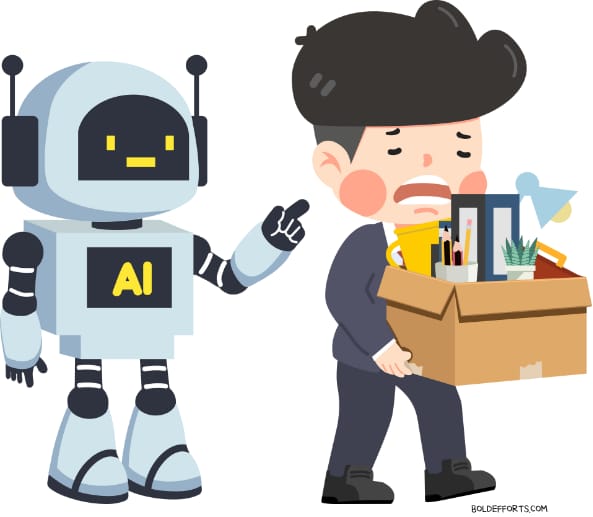Hello! 👋
It’s Thursday, 31st July 2025. Welcome back to Bold Efforts. Each Thursday we explore the real shifts shaping work and life. Today we ask a simple question: who decides whether you get the job when the interviewer is software?
First time reading? Join over 400 intellectually curious readers. Sign up here. As always, send me feedback at [email protected].
Key Idea: AI Recruiters
Recruitment used to crawl. A manager wrote a job post, resumes stacked up, interviews filled calendars, and a final decision surfaced weeks later. Today the script runs at machine speed. At Fortune 500 firms, large‑language‑model agents now write the ad, scout public code and forums for talent, chat through first‑round interviews, check references, draft contracts, and book onboarding before any human sees a CV.
This shift is no thought experiment. LinkedIn’s 2025 Global Hiring Trends survey reports that 78% of enterprise employers let AI run the first screening round. IBM’s CEO Arvind Krishna said that the company will pause hiring for about 7,800 back‑office roles it expects AI to automate. GitLab’s People Group Engineering handbook details the "Employment Bot" and other automation that power its talent acquisition workflow.
Why is adoption accelerating? Three forces clicked into place.
First, foundation models finally parse nuance instead of parroting stock replies.
Second, modern HR stacks have broken into open APIs so every step, from sourcing to compliance, is programmatically accessible.
Third, regulators are pushing. From August 2025 the European Union will classify most hiring algorithms as "high‑risk" and require full audit trails under the AI Act. Ironically, the best way to meet that rule is to let a bot keep score, because it never skips a log entry.
Speed is the reward. “Hourly‑role vacancies fell 56% in six months,” says Aaron Matos, founder of Paradox, whose chatbots staff retailers and hospitals. A recruiter sitting in Nairobi can spin up a design team in Paris overnight, with salaries pegged to live market data rather than office rumor.
But velocity comes with risk. We are essentially handing life‑changing choices to systems we cannot inspect. Language‑model scorers trained on historical data can still favor certain demographics even when resumes are scrubbed of obvious signals. Bias that once harmed dozens can now reach millions.
The remedy is transparency. Log every prompt, ranking, and rejection reason. Expose those ledgers to auditors and, when feasible, to applicants. “Explainability” has to be designed in, not bolted on during litigation. Leading teams already treat hiring data like flight data, with live bias dashboards and human overrides for edge cases.
Candidates are adapting fast. Story‑heavy resumes fall flat in a machine pipeline. Verifiable output travels further: shipped code, peer‑reviewed papers, timestamped design files. Digital badges from courses and hackathons slot straight into an agent’s feature set. Portfolios are morphing into live databases rather than static PDFs.
Human recruiters are far from obsolete. Specialists who master prompt design, bias tests, and agent tuning amplify their reach. Those who rely on intuition alone risk fading. The middle layer, manual screeners and scheduling coordinators, faces the hardest squeeze, because software already does that work without pausing for lunch.
For companies the question is no longer whether to automate hiring, but how to govern it. A talent moat rests on clean data, clear accountability, and feedback loops that learn faster than competitors. Policymakers must protect fairness without choking innovation. Workers must build a traceable record of competence that machines recognize.
Twenty years ago a faxed resume looked normal. Soon an all‑human hiring committee may feel just as quaint. Whether the new gatekeepers widen opportunity or narrow it will hinge less on their code and more on the guardrails we build around it. Thank you for reading. See you next week!
Best,
Kartik
Enjoying the read? Stay ahead with unique insights on the future of work and living. Subscribe to the Bold Efforts newsletter and receive fresh stories and ideas straight to your inbox every Thursday.
Who am I?
I’m Kartik, founder of Polynomial Studio, a holding company and product studio building AI-driven businesses for the future of work. The way we work and live is being rewritten. AI, remote work, and shifting economic forces are reshaping careers, businesses, and entire industries. The big question is where it’s all heading.
For the past eight years, I’ve been at the forefront of these shifts, working across real estate, technology, startups, and corporate strategy. I’ve helped businesses navigate change and stay ahead of what’s next, always focused on understanding the forces shaping our future and how we can use them to build something better. Click here to know more about me.
Why Bold Efforts?
I started Bold Efforts because I believe work should fit into life, not the other way around. Too many people are stuck in outdated systems that don’t serve them. This newsletter is about challenging the status quo and making the effort to design work around life. It brings together bold ideas and actionable insights to help you build a healthier, more balanced relationship with work, leading to greater purpose and fulfillment. If you’re looking for fresh perspectives on how to work and live better, you’re in the right place.
Was this email/link forwarded to you? Subscribe here

